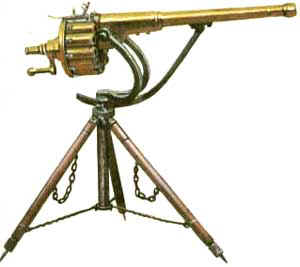Another anti-gun argument you’ll hear often is that the 2nd Amendment only protects muskets because the Founding Fathers never could have envisioned firearms technology of the 2oth and 21st Centuries.
The argument, therefore, is that the 2nd Amendment should only protect civilian ownership of firearm technologies that were available at the time of its ratification.
I’m waiting for Liberals to declare that speech over the internet, television, or radio is no longer protected by the First Amendment because the Founders could never have envisioned these types of technologies. Alas, no Leftists are advocating that 1st Amendment rights be restricted to just those types of communications crafted using ink and quill…
Yes, that is obviously tongue-in-cheek, but the argument is legitimate.
The 1st Amendment protects speech over the airwaves, phones, and the internet, even though none of these technologies existed in the 1700s.
The 3rd Amendment, which prohibits the quartering of troops in Americans’ homes, applies equally to RVs and Winnebagos, even though they weren’t invented until nearly two centuries after the Constitution was ratified.
The 4th Amendment protects against unreasonable searches and seizures of a citizen’s papers, but that doesn’t mean that computer files are fair game because the Founders couldn’t have envisioned personal computers.
I could go on and on… The point is, that if applied to any other part of the Constitution, this argument would fall flat on its face. Try telling a Liberal that abortion cannot be a constitutional right because the procedure didn’t exist at the time of the founding…
It is intriguing that the very ideology that presents the Constitution as a “living and breathing document” that evolves with the times takes such a hardline, originalist stance when it comes to guns.
Justice Scalia went out of his way to shoot down this nonsense argument in his Heller opinion:
Some have made the argument, bordering on the frivolous, that only those arms in existence in the 18th century are protected by the Second Amendment . We do not interpret constitutional rights that way. Just as the First Amendment protects modern forms of communications, e.g., Renov. American Civil Liberties Union, 521 U. S. 844, 849 (1997) , and the Fourth Amendment applies to modern forms of search, e.g., Kyllo v. United States, 533 U. S. 27, 35–36 (2001) , the Second Amendment extends, prima facie,to all instruments that constitute bearable arms, even those that were not in existence at the time of the founding.
That literally settles it. This is literally the law of the land.
But let’s have fun. What if the 2nd Amendment did only apply to firearms technologies available at the time of the founding.
Does that mean it is legal to ban repeating arms (semi-automatic, lever action, revolvers, etc…)?
Wrong. The Founding Fathers, being modern Renaissance Men, knew the potential for repeating arms. The Puckle Gun is often pointed to as the prime example.
The Puckle Gun was described as a “machine gun” by early adopters. It was a crew-operated, revolver. In trials, during a driving rainstorm, operators were able to fire 63 shots in just 7 minutes. While slow by today’s standards, this was a step up from the 2 rounds per minute that a musketeer could be expected to get off.
This advancement in firearms technology was patented in the early 1700s, before many of the Founders were even born.
What about high capacity magazines? The Founders couldn’t have possibly envisioned firearms that could have thirty round magazines, right?
Wrong. The Founders were more than capable of envisioning weapons with multiple-round magazines.
Enter the Girandoni Air Rifle, a .46 caliber rifle with a 20-round magazine.
Yes, it is an air rifle, but this isn’t your youngster’s bb gun. The Austrian Army reported that the Girandoni Air Rifle could pierce 1-inch pine boards at 100 yards. Reproductions have achieved bullet speeds of 535 feet-per-second. By comparison, 1911s fired .45 ACP during WWI and WWII at 830 FPS.
The Girandoni rifle was the first repeating firearm to be used in military service. It was adopted by the Holy Roman Empire, just to put the dates in perspective. Patented in 1779, the Founders absolutely knew about this type of technology when the Constitution was ratified 9 years later.
Ok fine, but surely the Founders never could have envisioned civilians owning powerful, military style weapons?
Wrong. In many cases, the muskets and rifles used by American colonial militia men were better than the muskets issued to British regulars. American colonists relied on these muskets and rifles to feed their family, so accuracy was a top priority.
For this reason, many American colonists owned rifles long before rifles significantly used by British regulars. These rifles, though slower to reload, were much more accurate than British smooth-bore muskets and could be accurate out to 300 yards.
This alone shoots holes in the argument that the Founders never envisioned civilians owning powerful weaponry.
There’s also the fact that many of the Founding Fathers, themselves, owned cannons. Privateers, using privately owned cannons, played a crucial role in protecting sea shipping channels during the Revolutionary War and even participated in some naval battles.
If the Founders were ok with civilians owning artillery, it’s really hard to argue they opposed civilian ownership of military weapons.
At the end of the day, however, none of these historical anecdotes really matter. The 2nd Amendment protects civilian ownership of all bearable arms, regardless of how scary the Liberals think that is…
 Second United
Second United



